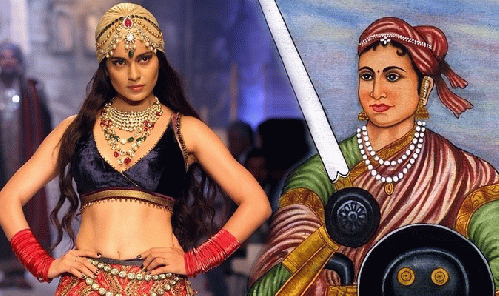(This is a reprint from NewsBred).
I happened to watch the movie "Manikarnika--The Queen of Jhansi" in theatre the other day. Kangana Ranaut as the protagonist was a force of purity and leaping flame. Fleeting were the images of India's War of Independence of 1857 of which she was a leading light. It shook the East India Company and led to India's formal takeover by the British crown.
People of my generation surely remember the immortal poem of Subhadra Kumari Chauhan (1904-1948): "Bundele Harbolon Ke Moonh Humnein Suni Kahani Thi; Khoob Ladi Mardani Woh to Jhansi Waali Rani Thi."(We have heard the tale from the mouths of famous warriors; that Queen of Jhansi was glorious in the battle.) I am not sure if the inspirational poem is still part of Class VI textbook and the younger lot is as familiar as we were while growing up; so I advice do watch the movie, look up for Rani Laxmibai of Jhansi and you could also be wrestling with a few questions which have since assailed me.
Do we have a state celebration of the birth (November 19, 1828) or death (June 18, 1858) anniversary of the Rani Laxmibai of Jhansi as we have of Tipu Sultan (November 10) in Karnataka? Why May 10 is not celebrated as the day the 1857 War of Independence broke out? Why not have a commemorative trail from Meerut to Delhi? Or at least make accessible the book, written by Vinayak Damodar Savarkar, on the subject. Isn't those who forget history are condemned to repeat it?
The other issue that interests me is how Rani Laxmibai of Jhansi escaped the censorious Nehruvian impact, which usually has been the fate of glorious figures of Hindu kings, generals and dare I say politicians (Sardar Patel and Madan Mohan Malviya, for instance). After all, she was the central figure of Hindutva politics circa 1857 and has been an icon ever since. How the Rani of Jhansi remained alive in the nation's psyche despite the Western-oriented elites controlling the written and spoken words in this country.
For one, Rani of Jhansi herself was a subject of great attention by the colonial authors and historians. The patriarchal society of West had a problem in coming to terms with the Rani. The British press was quick to dub her as "The Jezebel of India" or a shameless and immoral woman (after Jezebel, wife of Ahab in the Old Testament). Contemporary historian John Lang, who knew her, wrote in Wanderings in India (1858): "Her dress was plain white muslin, so fine in texture and drawn about her in such a way that the outline of her figure was plainly discernible; a remarkably fine figure she had." Christopher Hibbert in his Great Mutiny says that Rani was to acquire among British officers an "undeserved reputation for excessive lasciviousness." Basically, the colonial myth of British masculinity and the domesticity of Hindu women didn't conform to the Rani's persona.
All this to go with her universally acknowledged bravery. Field Marshal Hugh Rose who fought her on war-fields, thus described her: "She was the bravest and best military leader of the rebels--a man among mutineers." Lord Cumberland said that she was the most dangerous of all the rebel leaders.
Her fascination among the natives has many roots. There have been novels and non-fiction aplenty, including one (Rani of Jhansi) by Mahasweta Devi; a great number of films and television serials, even a video game and countless folk tales, poetry and oral traditions. It's a staggering amount of work (all of which could be viewed here).
One of the more remarkable work is by Harleen Singh: The Rani of Jhansi: Gender, History and Fable in India (Cambridge University Press, 2014). The book analyses gender, sexuality, race and religion in India through the prism of Rani of Jhansi. She was seen as the Indian Joan of Arc, a heroic and saintly spirit (a goddess, divine spirit, a Maa Durga in the eyes of worshipping Indians). During India's freedom struggle, she seamlessly became a symbol of the nationalist cause, causing an outburst in Hindi novels and literature and kept her legacy alive. She became a metaphor of Indian daughter, mother, wife and queen of both home and nation. One who could be viewed from various prisms of nation, gender and identity.
Essentially, Rani of Jhansi captured the imagination of masses and their discursive tales: She was as much a Hindu revivalist of Maratha empire as she was owned by Dalits for the mass struggle she inspired against the British. She was something to everyone. I guess that's the reason the destructive impact of Nehruvian philosophy couldn't get to Rani of Jhansi despite her blanking in media and academia circles (just compare how the legend of Queen Padmavati was lampooned in English mainstream media recently).
Keep it alive folks, do a good job of it. For Rani of Jhansi is India's glorious legend and heritage.






